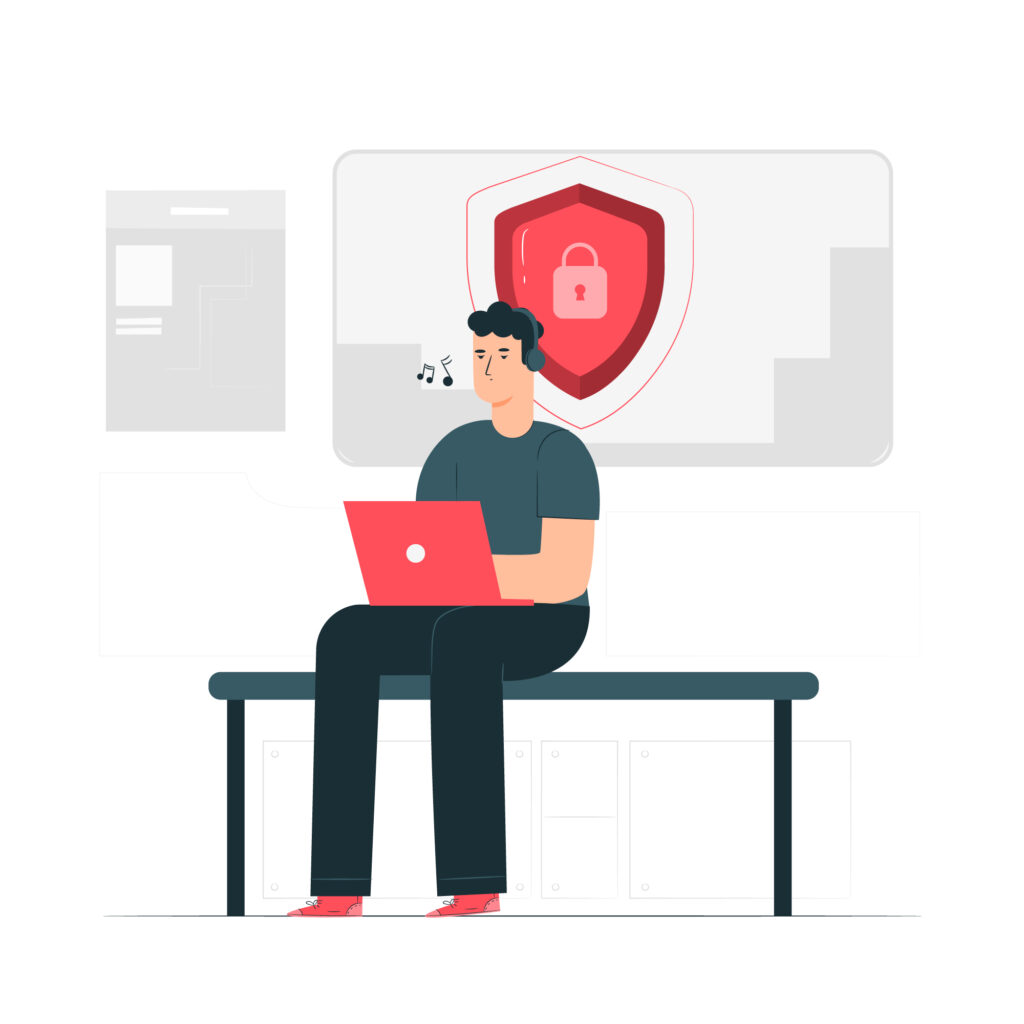 By: John Abhilash / July 22, 2024
By: John Abhilash / July 22, 2024
In the rapidly evolving world of cybersecurity, organizations face an increasing number of cyber threats that can jeopardize their sensitive data and operational integrity. Vulnerability Assessment and Penetration Testing (VAPT) are essential practices designed to proactively identify and address security weaknesses before they can be exploited by malicious actors. This comprehensive guide will walk you through the essentials of VAPT, its components, methodologies, and best practices to help you build a robust cybersecurity defense.
VAPT stands for Vulnerability Assessment and Penetration Testing. These two critical security practices work hand-in-hand to safeguard your organization’s digital assets.
Vulnerability Assessment (VA): This process involves systematically reviewing and identifying security weaknesses within your systems. The goal is to find and prioritize vulnerabilities based on their risk level, allowing for effective mitigation strategies.
Penetration Testing (PT): Also known as ethical hacking, penetration testing involves simulating attacks on your systems to evaluate their security. By exploiting vulnerabilities in a controlled environment, penetration testers provide a real-world view of potential security breaches and their impact.
Together, VA and PT offer a comprehensive approach to identifying and addressing security gaps, ensuring that your organization’s defenses are as strong as possible.
Key Components of Vulnerability Assessment Penetration Testing:
Identification of known vulnerabilities
Discovery of unknown vulnerabilities
Exploitation of vulnerabilities to assess real-world risk
Prioritization of security issues
Recommendations for remediation
2.Types of Vulnerability Assessment Penetration Testing:
The following are the key types of VAPT, each addressing specific security aspects of your IT environment:
a) Network VAPT:
Focuses on identifying vulnerabilities in network infrastructure, including firewalls, routers, and switches.
b) Web Application VAPT:
Targets vulnerabilities in web-based applications and APIs.
Tools: OWASP ZAP, Burp Suite, Acunetix
c) Mobile Application VAPT:
d) Cloud VAPT:
Evaluates security of cloud-based infrastructure and services.
Tools: Scout Suite, CloudSploit, Prowler
e) IoT VAPT:
Focuses on vulnerabilities in Internet of Things devices and ecosystems.
Tools: Shodan, Foren6, IoTSeeker
3.VAPT Methodology:
The VAPT methodology encompasses a systematic approach to assessing and improving security by following a series of defined steps:
Step 1: Reconnaissance
Gather information about the target system
Tools: Maltego, theHarvester, Recon-ng
Step 2: Scanning
Identify live hosts, open ports, and services
Tools: Nmap, Angry IP Scanner, Masscan
Step 3: Vulnerability Assessment
Identify known vulnerabilities in the target system
Tools: OpenVAS, Nessus, Qualys
Step 4: Penetration Testing
Attempt to exploit discovered vulnerabilities
Tools: Metasploit, Cobalt Strike, Core Impact
Step 5: Analysis and Reporting
Analyze results and prepare detailed reports
Tools: Dradis, PlexTrac, Faraday
Step 6: Remediation and Verification
Address identified vulnerabilities and re-test
Tools: Jira, ManageEngine Vulnerability Manager Plus
4.Essential VAPT Tools:
To effectively conduct VAPT, utilizing a range of specialized tools is crucial for comprehensive vulnerability assessment and penetration testing.
a) Vulnerability Scanners:
Nessus: Comprehensive vulnerability scanner with a vast database of known vulnerabilities.
OpenVAS: Open-source vulnerability scanner and manager.
Qualys: Cloud-based vulnerability management solution.
Tip: Run regular automated scans to maintain an up-to-date view of your vulnerabilities.
b) Network Mapping and Enumeration:
Nmap: Powerful open-source tool for network discovery and security auditing.
Angry IP Scanner: Fast and easy-to-use network scanner.
Maltego: Visual link analysis tool for gathering and connecting information.
Best Practice: Use multiple tools to get a comprehensive view of your network topology.
c) Web Application Security:
OWASP ZAP: Open-source web app scanner with both automated and manual testing capabilities.
Burp Suite: Popular web vulnerability scanner and proxy tool.
Acunetix: Automated web application security testing tool.
Tip: Combine automated scanning with manual testing for thorough web app assessment.
d) Exploitation Frameworks:
Metasploit: Widely-used penetration testing framework.
Cobalt Strike: Advanced adversary simulation and red team operations platform.
PowerShell Empire: Post-exploitation framework for Windows environments.
Caution: Always obtain proper authorization before using exploitation tools.
e) Wireless Network Testing:
Aircrack-ng: Complete suite for assessing WiFi network security.
Kismet: Wireless network detector, sniffer, and intrusion detection system.
WiFi Pineapple: Portable device for wireless network auditing and penetration testing.
Best Practice: Regularly audit your wireless networks, including guest networks.
f) Password Cracking:
John the Ripper: Fast password cracker for testing password strength.
Hashcat: Advanced password recovery tool.
Hydra: Online password cracking tool for various protocols.
Tip: Use these tools to test and enforce strong password policies.
5.Implementing a VAPT Program:
Successfully implementing a VAPT program involves strategic planning and execution, ensuring that your organization’s security posture is continuously assessed and strengthened.
Step 1: Define Scope and Objectives
Identify critical assets and systems to be tested
Determine the depth and breadth of testing (e.g., black box, gray box, white box)
Step 2: Develop a Testing Schedule
Plan for regular assessments (e.g., quarterly, bi-annually)
Consider continuous testing for critical systems
Tool Suggestion: Use project management tools like Trello or Asana to plan and track VAPT activities.
Step 3: Choose Testing Methodologies
Select appropriate testing methods for each asset (e.g., network VAPT, web app VAPT)
Align methodologies with industry standards (e.g., OSSTMM, PTES, OWASP Testing Guide)
Step 4: Assemble Your VAPT Team
Build an in-house team or engage external specialists
Ensure team members have relevant certifications (e.g., CEH, OSCP, GPEN)
Tip: Consider a hybrid approach, combining in-house expertise with specialized external consultants.
Step 5: Establish Reporting and Remediation Processes
Define report formats and severity rating systems
Create a workflow for addressing and verifying fixes
Tool Suggestion: Use a vulnerability management platform like Qualys VMDR or Rapid7 InsightVM to track and manage remediation efforts.
6.Best Practices for Effective VAPT:
To maximize the effectiveness of your VAPT efforts, adhere to these best practices, which ensure thorough assessments and effective mitigation of identified vulnerabilities.
a) Maintain an Asset Inventory:
Use tools like Spiceworks or Lansweeper to keep an up-to-date inventory of all assets.
Ensure all assets, including shadow IT, are included in VAPT scope.
b) Prioritize Vulnerabilities:
Use the Common Vulnerability Scoring System (CVSS) to prioritize vulnerabilities.
Consider business impact when prioritizing remediation efforts.
c) Conduct Both Internal and External Testing:
Perform external tests to simulate outside attackers.
Conduct internal tests to assess insider threat risks.
d) Embrace Automation:
Implement automated scanning tools for continuous assessment.
Use Security Orchestration, Automation, and Response (SOAR) platforms like Splunk Phantom or IBM Resilient for streamlined operations.
e) Stay Informed About New Vulnerabilities:
Subscribe to vulnerability feeds and security advisories.
Use threat intelligence platforms like AlienVault OTX or IBM X-Force Exchange.
f) Conduct Red Team Exercises:
Perform advanced, scenario-based testing to simulate real-world attacks.
Use tools like Cobalt Strike or Core Impact for sophisticated simulations.
7.Addressing Common VAPT Challenges:
Navigating the complexities of VAPT can present several challenges. Here are strategies to overcome common obstacles and ensure a successful vulnerability assessment and penetration testing program.
Challenge 1: Dealing with False Positives Solution:
Use multiple tools to cross-verify findings.
Implement a manual verification process for critical vulnerabilities.
Continuously tune and update your scanning tools.
Challenge 2: Keeping Pace with Evolving Threats Solution:
Regularly update your VAPT tools and methodologies.
Invest in ongoing training for your security team.
Participate in bug bounty programs to stay ahead of emerging threats.
Challenge 3: Testing Complex Environments Solution:
Develop a comprehensive testing strategy that covers all aspects of your infrastructure.
Use specialized tools for different environments (e.g., cloud-specific tools for cloud infrastructure).
Consider using a vulnerability correlation platform like Delve Labs or Risk Recon for holistic assessment.
Challenge 4: Balancing Security and Operations Solution:
Coordinate closely with IT and development teams to minimize disruption.
Implement a clear change management process for applying security fixes.
Use tools like ServiceNow or BMC Remedy for efficient change management.
8.Emerging Trends in VAPT:
Stay ahead of the curve by keeping an eye on these emerging trends:
a) AI and Machine Learning in VAPT:
Look for tools incorporating AI for more accurate vulnerability detection and prioritization.
Example: Cylance’s AI-driven endpoint protection platform.
b) DevSecOps Integration:
Integrate VAPT into the CI/CD pipeline for continuous security testing.
Tools to consider: Checkmarx, SonarQube, GitLab Security.
c) Cloud-Native Security Testing:
Adopt tools specifically designed for assessing cloud environments.
Examples: CloudSploit, Fugue, Prisma Cloud.
d) IoT and OT Security Assessment:
Expand VAPT scope to include Internet of Things and Operational Technology environments.
Specialized tools: Armis, Nozomi Networks, Claroty.
9.Measuring VAPT Effectiveness:
To ensure your VAPT program is delivering results, track these key metrics:
a) Vulnerability detection rate
b) Mean time to detect (MTTD)
c) Mean time to remediate (MTTR)
d) Recurrence rate of vulnerabilities
e) Coverage of assets tested
Tool Suggestion: Use security analytics platforms like Splunk or ELK Stack to track and visualize these metrics.
10.Building a Security-Aware Culture:
To maximize the effectiveness of your VAPT efforts, it’s crucial to cultivate a security-aware culture within your organization. This involves regular training, fostering collaboration, and encouraging proactive security practices across all teams.
a) Conduct regular security awareness training:
Use platforms like KnowBe4 or Proofpoint Security Awareness Training.
b) Implement a bug bounty program:
Consider platforms like HackerOne or Bugcrowd to engage ethical hackers.
c) Foster collaboration between security and development teams:
Implement tools like Slack or Microsoft Teams for seamless communication.
d) Regularly share VAPT results and lessons learned across the organization:
Use internal knowledge bases or wikis to disseminate information.
Conclusion:
Vulnerability Assessment and Penetration Testing is not a one-time effort but an ongoing process crucial to maintaining a robust cybersecurity posture. By implementing a comprehensive VAPT program using the tools, techniques, and best practices outlined in this guide, you can significantly enhance your organization’s ability to detect and address security weaknesses before they can be exploited.
Remember, the threat landscape is constantly evolving, and so should your VAPT strategies. Stay informed about new tools and techniques, continuously refine your processes, and foster a culture of security awareness throughout your organization.
By making VAPT a cornerstone of your cybersecurity strategy and following these practical guidelines, you’re taking a proactive stance in protecting your digital assets and maintaining the trust of your stakeholders in an increasingly perilous digital world.
Check Out our Other Resources : Master ASPM :Build a secure strategy







Leave a Comment